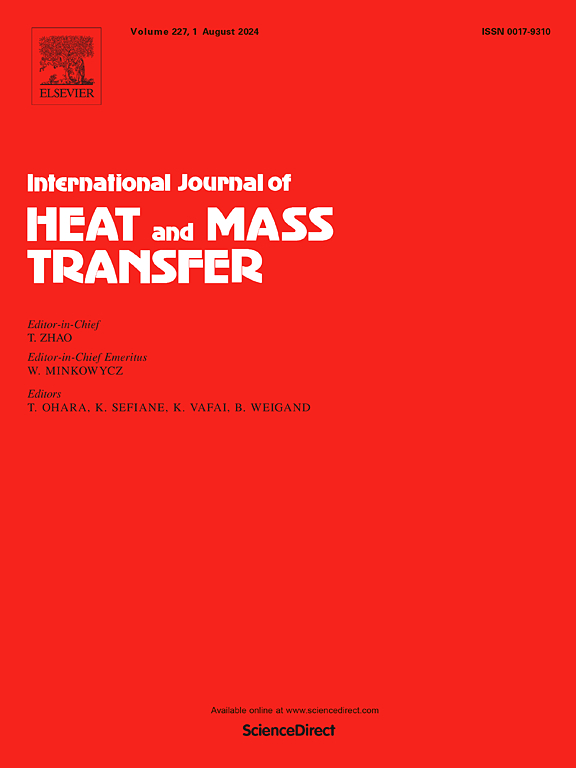Additively manufactured inconel 718 vapor chamber with conformal micro-pillar wicks: A low temperature concept demonstration
IF 5
2区 工程技术
Q1 ENGINEERING, MECHANICAL
International Journal of Heat and Mass Transfer
Pub Date : 2025-04-09
DOI:10.1016/j.ijheatmasstransfer.2025.127056
引用次数: 0
Abstract
Effective thermal management is crucial in hypersonic flight (Mach > 5) due to extremely high aerodynamic heating located at leading edges, and both passive and active thermal protection systems (TPS) have been used to address this. Among passive TPS options are two-phase thermal management systems, such as heat pipes (HP) and vapor chambers (VC), which can realize a considerable reduction in steady-state leading edge temperature owing to their extremely high heat transfer capability. This leads to reduction in complexity and cost of TPS structure and material requirements. However, conventional HP and VC fabrication methods require multiple manufacturing and assembly steps, limiting their design space. Alternatively, utilizing additive manufacturing (AM) for fabrication can bypass conventional manufacturing limitations and enable structural members with intricate internal channels and topologically optimized shapes. AM can, therefore, unveil a larger design space for tailored leading edge concepts with an integrated passive TPS. This work demonstrates the design, fabrication and testing of a notional methanol-filled Inconel 718 VC with a conformal micro-pillar wick fabricated via laser-beam powder bed fusion AM. This serves as a proof of concept and establishes a foundation for design and fabrication of high-temperature additively manufactured sodium-filled leading edge VCs.
增材制造inconel 718蒸汽室与保形微柱芯:低温概念演示
在高超声速飞行中,有效的热管理是至关重要的。5)由于位于前缘的极高气动加热,被动和主动热保护系统(TPS)都已用于解决这一问题。在被动TPS选项中,有两相热管理系统,如热管(HP)和蒸汽室(VC),由于其极高的传热能力,可以大幅降低稳态前缘温度。这降低了TPS结构和材料要求的复杂性和成本。然而,传统的HP和VC制造方法需要多个制造和组装步骤,限制了它们的设计空间。另外,利用增材制造(AM)进行制造可以绕过传统的制造限制,并使结构部件具有复杂的内部通道和拓扑优化形状。因此,AM可以通过集成的被动TPS为定制的前沿概念提供更大的设计空间。本工作演示了一种概念的甲醇填充Inconel 718 VC的设计、制造和测试,该VC具有通过激光束粉末床熔化AM制造的共形微柱芯。这可以作为概念验证,并为高温增材制造钠填充前沿vc的设计和制造奠定基础。
本文章由计算机程序翻译,如有差异,请以英文原文为准。
求助全文
约1分钟内获得全文
求助全文
来源期刊
CiteScore
10.30
自引率
13.50%
发文量
1319
审稿时长
41 days
期刊介绍:
International Journal of Heat and Mass Transfer is the vehicle for the exchange of basic ideas in heat and mass transfer between research workers and engineers throughout the world. It focuses on both analytical and experimental research, with an emphasis on contributions which increase the basic understanding of transfer processes and their application to engineering problems.
Topics include:
-New methods of measuring and/or correlating transport-property data
-Energy engineering
-Environmental applications of heat and/or mass transfer

 求助内容:
求助内容: 应助结果提醒方式:
应助结果提醒方式:


